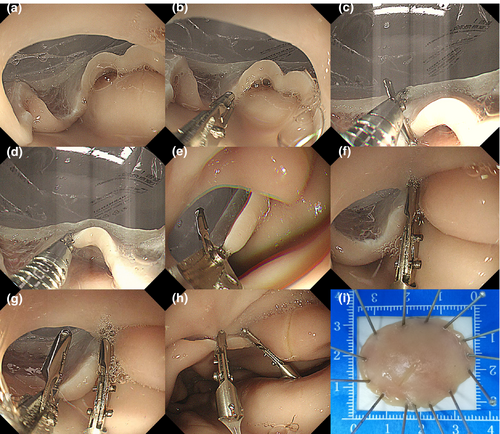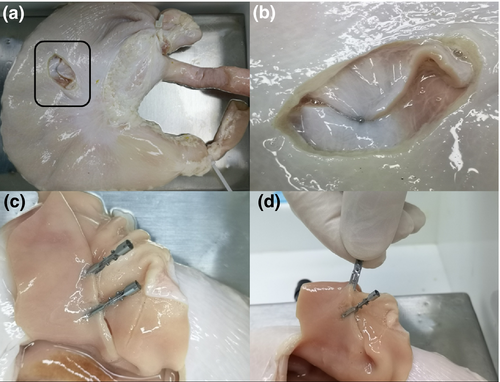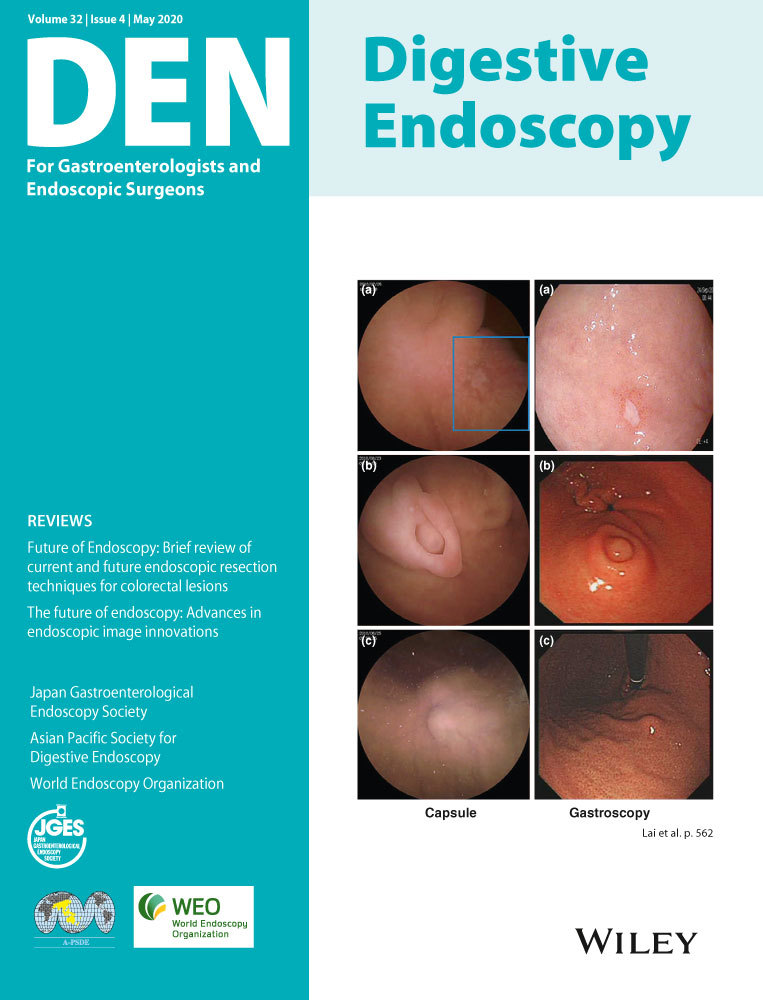Endoscopic closure of a large-size perforation using a novel through-the-scope twin endoclip in an ex vivo porcine stomach model
Abstract
Watch a video of this article
Brief Explanation
Closure of wound is very important for perforation during endoscopic submucosal dissection (ESD) and endoscopic full-thickness resection.1, 2 Through-the-scope twin endoclip (TTS-TC) was a technique developed by our team.3 In this study, TTS-TC was attempted for suturing a large-size perforation. An ex vivo porcine stomach and a model device for endoscopic submucosal dissection (ESD) in an animal experiment were prepared. Beforehand, a perforation of > 3 cm in size was artificially constructed on the greater curvature close to the anterior wall of porcine stomach with a blade (Fig. 1a), followed by perforation suture with TTS-TCs. The procedures were as follows (Fig. 1 and Video S1): (i) the endoscope (QF-260J; Olympus, Tokyo, Japan) was delivered from the porcine esophagus to the stomach; (ii) TTS-TC was sent to the site of perforation through the endoscopic working channel (Fig. 1b); (iii) With the assistance of operating the handle of TTS-TC, one side of TTS-TC was opened to tightly clamp the mucosal tissue on one side of the perforation (Fig. 1c,d). Then, the clamped mucosa was pulled close to the other side of the perforation, and the other side of TTS-TC was opened subsequently to clamp the mucosal tissue on the other side (Fig. 1e); (iv) After both mucosal tissues were clamped together, TTS-TC was released and the perforation was sutured (Fig. 1f). Two TTS-TCs were used to successfully close the perforation (Fig. 1g,h), and the operation time was 4.5 min. The excised tissue for establishing an artificial perforation was 3.5 × 2.8 cm in size (Fig. 1i). After closing the perforation, the effect of wound closure was observed from the inside and outside of the porcine stomach, respectively, and the closure of perforation was realized using TTS-TC firmly (Fig. 2). TTS-TC has a great potential to effectively suturing a large-sized perforation.


Authors declare no conflicts of interest for this article.




